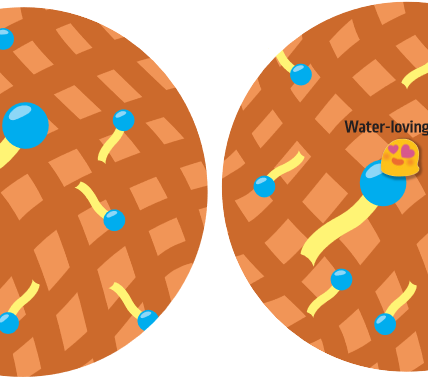Stereochemistry, a crucial branch of chemistry, delves into the study of the spatial arrangement of atoms in molecules and its impact on their physical and chemical properties. This 1000-word article explores the profound role of stereochemistry in determining the flavors and fragrances of various substances, illustrating how subtle changes in molecular structure can lead to significant differences in sensory perception.
Introduction to Stereochemistry
Stereochemistry focuses on the three-dimensional arrangement of atoms within molecules. Its significance lies in the fact that the spatial orientation of atoms can drastically alter the chemical behavior and sensory characteristics of a compound, even if their molecular formulas are identical. This aspect is particularly vital in the realms of flavors and fragrances.
Understanding Isomerism in Stereochemistry
The concept of isomerism is central to stereochemistry. Isomers are compounds with the same molecular formula but different structural arrangements. In stereochemistry, two primary types of isomerism are observed:
- Geometric Isomerism (Cis-Trans Isomerism): Different spatial arrangements of atoms around a double bond or a ring structure.
- Optical Isomerism (Enantiomerism): Molecules that are mirror images of each other but cannot be superimposed, much like left and right hands. These mirror-image molecules are called enantiomers.
The Sensory Impact of Stereoisomers
The sensory properties of flavor and fragrance compounds are often directly linked to their stereochemistry. Enantiomers can have remarkably different smells and tastes, a phenomenon that is fascinating and crucial in the food and fragrance industries.
Case Studies of Stereoisomers in Flavors and Fragrances
- Limonene: This compound exists as two enantiomers: D-limonene, with a sweet orange odor, and L-limonene, with a more turpentine-like smell.
- Carvone: The D-form of carvone smells like caraway, while the L-form has the aroma of spearmint.
- Raspberry Ketone: The enantiomers of raspberry ketone can either smell like the fruit or have no smell at all.
Stereochemistry in Flavor Production
The flavor industry heavily relies on stereochemistry to create and replicate flavors. Synthetic chemists work to identify the specific isomers responsible for desirable flavors and then synthesize them. In some cases, only one enantiomer is responsible for a flavor, making the synthesis more challenging.
Natural vs. Synthetic Flavors
In nature, flavors are often a mixture of various stereochemical forms. However, in synthetic flavor production, identifying and producing the specific isomer that mimics the natural flavor is key. The complexity and cost of synthesizing specific isomers influence the feasibility and price of artificial flavors.
Stereochemistry in Fragrance Chemistry
Like flavors, the fragrance industry also depends on stereochemistry. The subtle nuances that differentiate one scent from another often come down to the spatial arrangement of molecules.
Chirality and Scent Perception
Chirality, a property where a molecule has non-superimposable mirror images (like left and right hands), plays a significant role in fragrance chemistry. Chiral molecules can interact differently with olfactory receptors, leading to different scent perceptions.
Challenges in Synthesizing Stereoisomers
Synthesizing specific stereoisomers can be challenging due to the complexity of the molecules and the need for chiral purity. Advanced techniques in organic synthesis, such as asymmetric synthesis, are employed to selectively produce the desired isomer.
Stereochemistry in Natural Extracts
Many flavors and fragrances are derived from natural extracts, which contain a complex mixture of stereoisomers. The extraction and purification processes aim to retain the stereochemical integrity of these compounds to preserve their natural sensory qualities.
The Role of Stereochemistry in Sensory Evaluation
Sensory evaluation, a critical aspect of the flavor and fragrance industry, involves understanding how different stereoisomers affect human perception. This field combines chemistry with sensory science to assess and optimize the sensory properties of products.
Regulatory Aspects and Safety
The stereochemistry of flavor and fragrance compounds also has regulatory and safety implications. Certain stereoisomers may have different toxicological profiles, necessitating rigorous testing and regulatory approval, especially in the food industry.
Future Trends and Innovations
Advancements in stereochemistry are leading to innovative approaches in flavor and fragrance development. Techniques like molecular modeling and machine learning are being explored to predict the sensory properties of stereoisomers and guide the synthesis of new compounds.
Environmental and Sustainability Considerations
In recent years, there has been a growing emphasis on environmental sustainability in the synthesis of flavors and fragrances. Green chemistry principles are being applied to develop environmentally friendly synthesis methods that minimize waste and reduce the use of hazardous substances.
Conclusion
Stereochemistry plays a pivotal role in the world of flavors and fragrances, influencing everything from the taste of food to the scent of perfumes.










